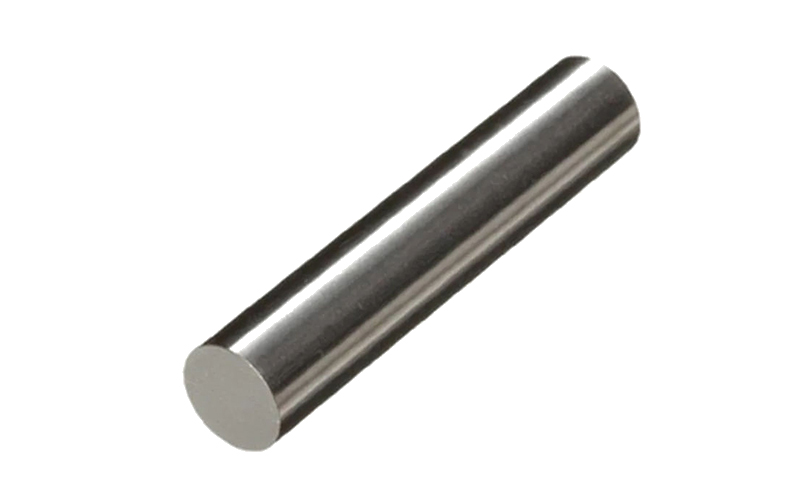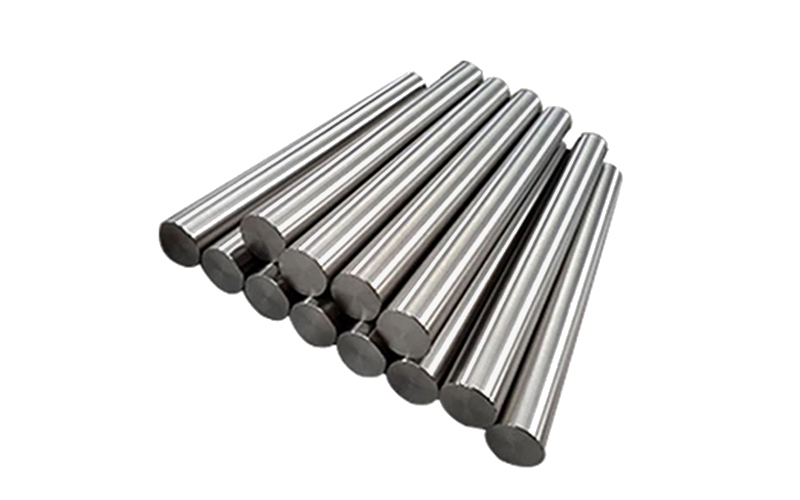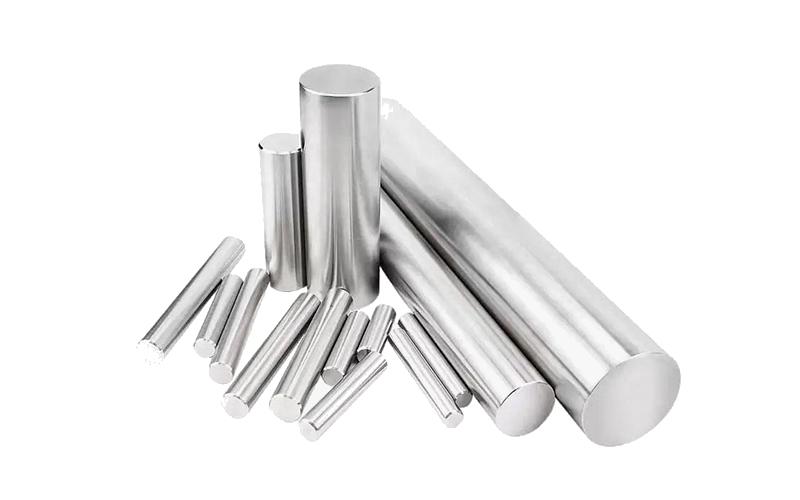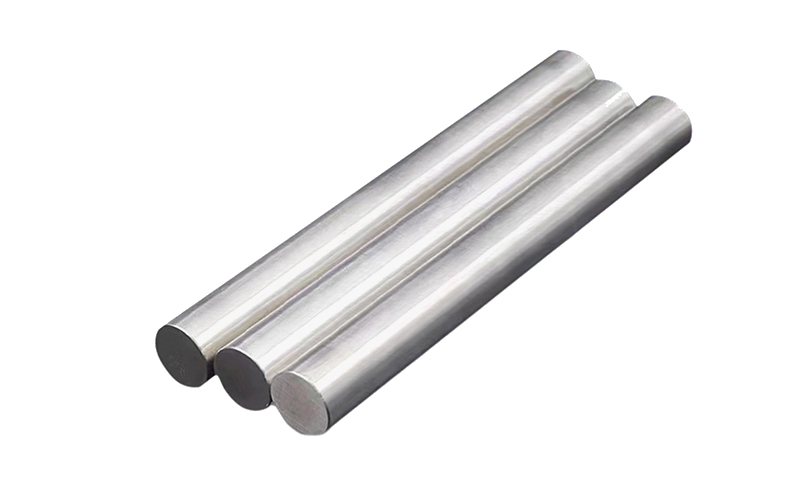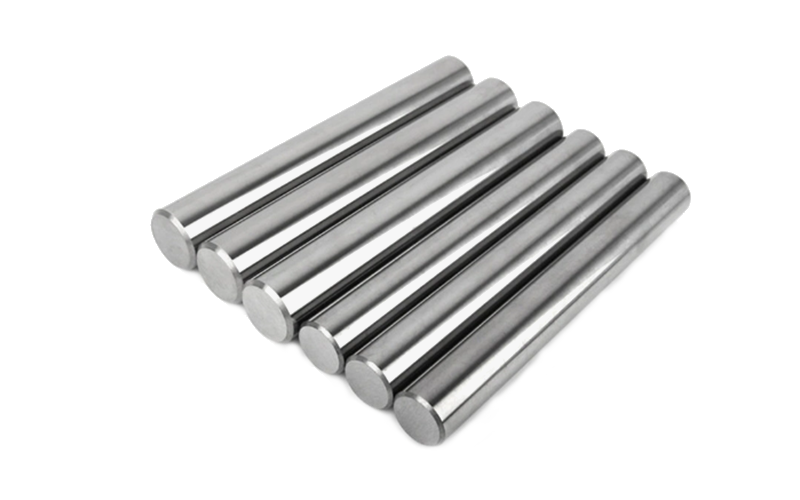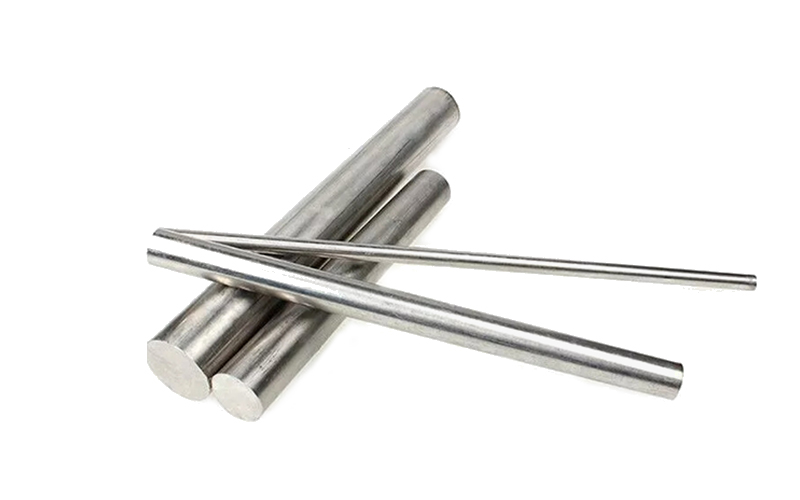 Monel alloy barMonel is a kind of corrosion resistant alloy with large dosage, wide use and excellent comprehensive performance. The alloy has excellent corrosion resistance in hydrofluoric acid and fluorine gas medium, and also has excellent corrosion resistance in hot concentrated alkaline solution. It is also resistant to corrosion of neutral solution, water, sea water, atmosphere and organic compounds. One of the most important characteristics of the alloy is that stress corrosion cracks do not occur in general, and the cutting performance is good. The structure of Monel alloy is single phase solid solution with high strength.
Monel alloy barMonel is a kind of corrosion resistant alloy with large dosage, wide use and excellent comprehensive performance. The alloy has excellent corrosion resistance in hydrofluoric acid and fluorine gas medium, and also has excellent corrosion resistance in hot concentrated alkaline solution. It is also resistant to corrosion of neutral solution, water, sea water, atmosphere and organic compounds. One of the most important characteristics of the alloy is that stress corrosion cracks do not occur in general, and the cutting performance is good. The structure of Monel alloy is single phase solid solution with high strength. Nickel alloy plateNickel alloy rod is a kind of alloy material composed of nickel and other metal elements (such as chromium, molybdenum, iron, copper, etc.), which has excellent corrosion resistance, high temperature strength, good mechanical properties and processing properties. Nickel alloy rod can be divided into nickel copper alloy, nickel chromium alloy, nickel chromium iron alloy, nickel molybdenum alloy, nickel chromium tungsten alloy and so on.
Nickel alloy plateNickel alloy rod is a kind of alloy material composed of nickel and other metal elements (such as chromium, molybdenum, iron, copper, etc.), which has excellent corrosion resistance, high temperature strength, good mechanical properties and processing properties. Nickel alloy rod can be divided into nickel copper alloy, nickel chromium alloy, nickel chromium iron alloy, nickel molybdenum alloy, nickel chromium tungsten alloy and so on.
Because of its excellent corrosion resistance, nickel alloy rod has been widely used in chemical, petroleum, energy, ocean engineering, aerospace, nuclear industry and other fields. For example, in the chemical industry, nickel alloy rods can be used to manufacture corrosion-resistant equipment, pipes and valves. In the aerospace sector, nickel alloy rods can be used to make high-temperature components, such as blades and combustion chambers for turbine engines.
The manufacturing process of nickel alloy rod usually includes melting, casting, forging, heat treatment, machining and other steps. Among them, smelting is to melt nickel and other metal elements at high temperature to form a uniform alloy liquid; Casting is the alloy liquid poured into the mold, cooling and solidification to obtain the desired shape of the casting; Forging is to deform the casting by pressure to improve its internal structure and mechanical properties; Heat treatment is to adjust the microstructure and properties of the alloy through the heating and cooling process; Finally, through mechanical processing, such as turning, milling, drilling, etc., to obtain the required size and shape of the nickel alloy rod.
Please note that the specific composition, properties and application areas of nickel alloy rods may vary depending on the manufacturer and market needs. Therefore, when selecting and using nickel alloy rods, reasonable choices need to be made according to the specific application environment and requirements. Titanium alloy barTitanium alloy is a shape memory alloy. Shape memory alloy is a special alloy that can automatically restore its plastic deformation to its original shape at a certain temperature. Its expansion rate is more than 20%, 1*10 power of 7, damping characteristics are 10 times higher than ordinary spring, its corrosion resistance is better than the current good medical stainless steel, so it can meet all kinds of engineering and medical application needs, is an excellent functional material. In addition to the shape memory function, memory alloy also has the excellent characteristics of wear resistance, corrosion, high damping and high elasticity.
Titanium alloy barTitanium alloy is a shape memory alloy. Shape memory alloy is a special alloy that can automatically restore its plastic deformation to its original shape at a certain temperature. Its expansion rate is more than 20%, 1*10 power of 7, damping characteristics are 10 times higher than ordinary spring, its corrosion resistance is better than the current good medical stainless steel, so it can meet all kinds of engineering and medical application needs, is an excellent functional material. In addition to the shape memory function, memory alloy also has the excellent characteristics of wear resistance, corrosion, high damping and high elasticity. Incoloy alloy barIncoloy is suitable for all concentrations of sulphuric acid at low temperatures; In 50% ~ 70% concentration of caustic alkali solution (such as NaOH), it has good corrosion resistance and does not produce stress corrosion cracking. Inconel is suitable for various solutions and acids containing Cl -, and many media such as caustic alkali with concentration < 70%.
Incoloy alloy barIncoloy is suitable for all concentrations of sulphuric acid at low temperatures; In 50% ~ 70% concentration of caustic alkali solution (such as NaOH), it has good corrosion resistance and does not produce stress corrosion cracking. Inconel is suitable for various solutions and acids containing Cl -, and many media such as caustic alkali with concentration < 70%. Inconel alloy barInconel alloy is a nickel-ferrochrome nickel-base corrosion resistant and heat resistant alloy, which has the following characteristics:
Inconel alloy barInconel alloy is a nickel-ferrochrome nickel-base corrosion resistant and heat resistant alloy, which has the following characteristics:
Good resistance to reduction, oxidation, nitriding medium corrosion performance at room temperature and high temperature has good resistance to stress corrosion cracking performance good resistance to drying chlorine and hydrogen chloride gas corrosion performance below 650°C has high strength, good molding, easy to weld; In air, the maximum operating temperature is 1175°C Hastelloy alloy plateHastelloy rod is a kind of nickel-based corrosion resistant alloy, mainly divided into nickel-chromium alloy and nickel-chromium molybdenum alloy two categories. It is a general name for the commercial grades of nickel-based corrosion resistant alloys produced by Hastelloy International, including nickel-molybdenum Hastelloy B-2, nickel-chromium molybdenum Hastelloy C-4 and so on.
Hastelloy alloy plateHastelloy rod is a kind of nickel-based corrosion resistant alloy, mainly divided into nickel-chromium alloy and nickel-chromium molybdenum alloy two categories. It is a general name for the commercial grades of nickel-based corrosion resistant alloys produced by Hastelloy International, including nickel-molybdenum Hastelloy B-2, nickel-chromium molybdenum Hastelloy C-4 and so on.
Hastelloy rod has good corrosion resistance and thermal stability, as well as excellent corrosion resistance, uniform corrosion resistance and intergranular corrosion resistance, especially suitable for wet oxygen, sulfite, acetic acid, formic acid and strong oxide salt media. Therefore, Hastelloy rods are widely used in harsh industrial environments such as aviation, chemical, petrochemical, nuclear facilities, and biopharmaceuticals.
The manufacturing process of Hastelloy rods includes steps such as melting, forging, heat treatment, processing and inspection. Smelting is to melt nickel, chromium, molybdenum, tungsten and other metal elements into alloy ingot; Forging is to forge the ingot to form the desired shape of the billet; Heat treatment includes solution treatment and aging treatment to improve the strength and hardness of the alloy; Processing includes turning, milling, drilling and other operations to obtain the desired shape and size of the parts; Finally, the quality inspection is carried out to ensure that the parts meet the requirements.
The above information is for reference only, if necessary, it is recommended to consult professional alloy material field.

{item.title}
{item.description}
Leave A Message

